Taj Mahal Foxtrot, which will be launched at the Goa Literary Festival tomorrow evening, takes its name from the tune above recorded in April 1936 by Crickett Smith and his Symphonians, the gents in that photo. They had been booked by the management of Taj Mahal hotel in Apollo Bunder to perform there for the 1936 summer season.
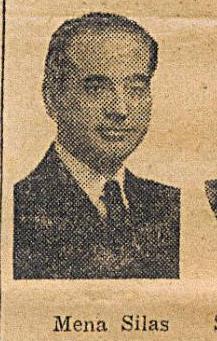 But the man by whom I’m most intrigued isn’t in the picture. He’s the person who wrote the lyrics and the music. The record credits list his name as Mena Silas. Until a couple of years ago, I knew very little about Mena Silas. From an internet auction site that sold sheet music, I knew that Silas had been writing tunes in Bombay from at least 1930. That’s when LM Furtado on Kalbadevi Road published the score for one of his pieces called Don’t Tell Me Now. The cover of the score bore the illustration of a sophisticated couple dancing in evening dress.
But the man by whom I’m most intrigued isn’t in the picture. He’s the person who wrote the lyrics and the music. The record credits list his name as Mena Silas. Until a couple of years ago, I knew very little about Mena Silas. From an internet auction site that sold sheet music, I knew that Silas had been writing tunes in Bombay from at least 1930. That’s when LM Furtado on Kalbadevi Road published the score for one of his pieces called Don’t Tell Me Now. The cover of the score bore the illustration of a sophisticated couple dancing in evening dress.

Then the historian Teresa Albuquerque gave me a copy of a paper called The Indian Observer from a few years later. It had an article about a production titled The Isle of Dreams that had been mounted by the Bombay Amateur Dramatic Club. It said that the musical play had been written by Mena Silas, who it described as a “talented composer”.
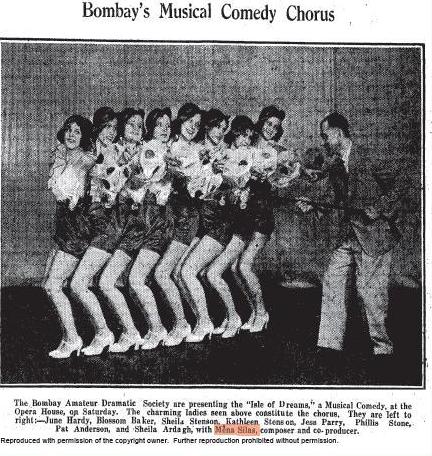 A few months on, I found an article about jazz in India that the Illustrated Weekly of India had carried in 1948. The article said that though Bombay had several talented jazz composers, it wasn’t easy for them. It quoted Mena Silas complaining that dance-music composers in India had fewer chances of making it big than their counterparts in New York or London.
A few months on, I found an article about jazz in India that the Illustrated Weekly of India had carried in 1948. The article said that though Bombay had several talented jazz composers, it wasn’t easy for them. It quoted Mena Silas complaining that dance-music composers in India had fewer chances of making it big than their counterparts in New York or London.
That excited me no end. It meant that even though the musicians on Taj Mahal were foreign, the composer was Indian. That makes it, I’m fairly, the first Indian “hot music” tune ever to be recorded.
But I still didn’t know very much more about the man who wrote it. So I googled him and his name came up on a site on which American users were trying to track down their ancestors. One message read: “I am seeking info on Mena Silas. He travelled in India as a conductor/composer in the 1930s. Contact: dhilsen.”
I wrote to the address on June 5, 2009, and checked my mailbox obsessively, but there was no reply. But on June 11, when I got a message from a woman named Dene Hilsen.
“Hi Naresh,” it said. “I’m so happy to hear from you. My grandmother sang with Mena in India. Her name was Signe Rintala. I believe she had a radio contract and was performing with Mena. I have an article about them. He was rather particular about who he worked with and loved the way Signe interpreted his songs.”
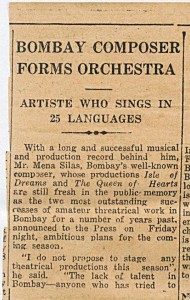 Dene Hilsen told me that she taught English to first-grade school children in San Diego, California, and sent me an article about her grandmother, Signe Rintala, the woman who had sung with Silas. It was a clip from the Evening News of India from Nov 17, 1934. It bears the headline: “Bombay composer forms orchestra.”
Dene Hilsen told me that she taught English to first-grade school children in San Diego, California, and sent me an article about her grandmother, Signe Rintala, the woman who had sung with Silas. It was a clip from the Evening News of India from Nov 17, 1934. It bears the headline: “Bombay composer forms orchestra.”
The article says: “With a long and successful musical and production record behind him, Mr Mena Silas, Bombay’s well-known composer, whose productions The Isle of Dreams and The Queen of Hearts, are still fresh in the public memory as the two most outstanding successes of amateur theatrical work in Bombay for a number of years past, announced to the press of Friday night, ambitious plans for the coming season.
‘I do not plan to stage any theatrical productions this season,’ he said. ‘The lack of talent in Bombay – anyone who has tried to stage a show knows how difficult it is even to go get a chorus together – makes it impossible for me to stage shows on the scale I wish.’
“Instead, he has decided to form an orchestra of ten members. In addition, he has agreed to retain a talented artiste, Mlle Signe Rintala, who is already in Bombay. A native of Finland, she sings in 25 languages. She is no stranger to India, having sung before the Viceroy and Lady Willingdon during her last Far Eastern tour, and her performance came in for unstinted praise from the press.”
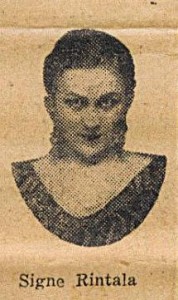 Well, I finally knew a little more about Mena Silas, the man who wrote India’s first jazz song. And then Dene Hilsen, that stroke of divine intervention from the primary school system of San Diego, California, added some more details. Silas was a Baghdadi Jew, who was born in Shanghai, though his parents had been born in India. Silas had at least eight brothers and sisters, she told me, and he had at least two children. The family were related to the Sassoons, the merchant family who made donations for some of Bombay’s grandest public buildings. When Silas wasn’t composing music, he was a trader. The Silas family later migrated to Canada, London and Bombay. Dene Hilsen’s next message said: “I do have one ship record where he lists his occupation as a cotton merchant. I have followed his wanderings through ship records.”
Well, I finally knew a little more about Mena Silas, the man who wrote India’s first jazz song. And then Dene Hilsen, that stroke of divine intervention from the primary school system of San Diego, California, added some more details. Silas was a Baghdadi Jew, who was born in Shanghai, though his parents had been born in India. Silas had at least eight brothers and sisters, she told me, and he had at least two children. The family were related to the Sassoons, the merchant family who made donations for some of Bombay’s grandest public buildings. When Silas wasn’t composing music, he was a trader. The Silas family later migrated to Canada, London and Bombay. Dene Hilsen’s next message said: “I do have one ship record where he lists his occupation as a cotton merchant. I have followed his wanderings through ship records.”
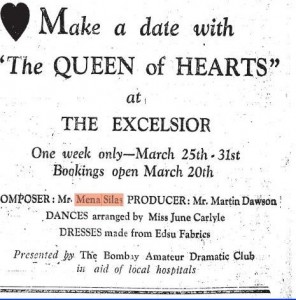 This intrigued me even further. Why was a California schoolteacher obsessing about an obscure Baghdadi Jewish jazz composer? I’ve thought I was the only person crazy enough to do this sort of thing. By now, she was replying to messages much quicker so on June 13, just under two weeks after I’d written to her, Dene Hilsen revealed her real interest in Silas. Her grandmother, the singer Signe Rintala, later got married in Hyderabad and had four children. But before that, she had one daughter out of wedlock – the woman who became Dene Hilsen’s mother. The girl was adopted by a British journalist and eventually found her way to America. Signe Rintala never told her the identity of her father. One of Dene Hilsen’s messages said: “My only clue is Mena. I really have no idea beyond the newspaper clipping. That is why I have been involved in searching for Mena and his descendants. Even if it turns out we are not related, I have been on an amazing journey learning about him and his family.”
This intrigued me even further. Why was a California schoolteacher obsessing about an obscure Baghdadi Jewish jazz composer? I’ve thought I was the only person crazy enough to do this sort of thing. By now, she was replying to messages much quicker so on June 13, just under two weeks after I’d written to her, Dene Hilsen revealed her real interest in Silas. Her grandmother, the singer Signe Rintala, later got married in Hyderabad and had four children. But before that, she had one daughter out of wedlock – the woman who became Dene Hilsen’s mother. The girl was adopted by a British journalist and eventually found her way to America. Signe Rintala never told her the identity of her father. One of Dene Hilsen’s messages said: “My only clue is Mena. I really have no idea beyond the newspaper clipping. That is why I have been involved in searching for Mena and his descendants. Even if it turns out we are not related, I have been on an amazing journey learning about him and his family.”
And that, then, is the very convoluted story of Taj Mahal. As you listen to that foxtrot recorded by a group African-American musicians out on a lark in Asia, listen for the echoes of a Baghdadi Jewish man in love with hot music, of a Finnish soprano who halted her world tour to start afresh in Hyderabad and of a Californian school teacher searching for a love child of uncertain parentage (rather like jazz music itself).
Update 1
In December 2020, just over nine years after I first wrote about my attempt to dig out information about Mena Silas, the Bombay musician who had composed Taj Mahal: A Foxtrot in 1936, I received an email message from his granddaughter Jean Samuel in England. Here’s what she said.
Update 2
A month later, Patricia Kaden who lives in Cremona, Italy, was sorting through the papers of her mother, Georgia, and came upon a small note indicating that Mena Silas had written a tune for her titled Waltz for Georgette. That piece here.


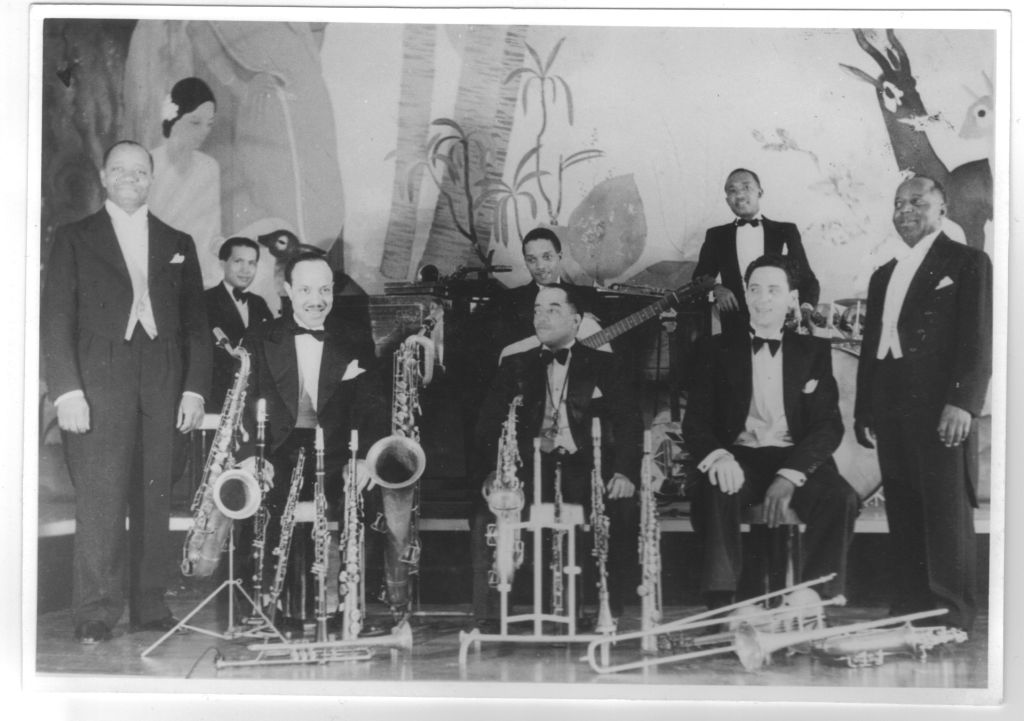
15 comments
What a marvelous story! We’re all indebted to you for your detective work .
Thanks for all your helping putting the book together, Sir.
Dear Naresh, what a beautiful site with beautiful music.
I got one ep of Braz Gonsalvez. If you are interested,
check http://www.hindustanivinyl.blogspot.com
I can also send you a scan of the cover and the fulllength
soundfile.
all the best,
Florian
Apologies for pedantry but it is my understanding that Smith’s name correctly should be written with two ts: Crickett Smith.
Anthony, you’re quite right. That was a typo. Thanks for pointing that ou. I’ll make a fix immediately.
This story gave me goosebumps. It tells me globalisation is new word for something that has been going on for a long time!
You’re quite right, Jenny. And Goa is a perfect example of how long people and cultures have been influencing each other.
Hi Jenny:
I have been reading all these wondeful jazz articles and wondering if you are the Jenny Pacheco who lived opposite me and whose dad was a musician. Please contact me at cybulman@aol.com.
Cyrus Bulsara.
Dallas, TX, USA
another great story and sleuthing!
Naresh – its an incredible story and beautifully written. great our city such a polyglot and home to us stragglers and migrants and people who have also always been here
[…] came to Bombay including Leon Abbey, Crickett Smith, Teddy Weatherford and others. This hot music became a big hit with musicians from Goa, who in turn introduced jazz elements into Hindi […]
This series of articles is wonderful and brings back so many great memories of Chic Chocolate, Braz Gonsalves, Godhinho (drummer) and I just forget so many names.
Those were the days when we had jazz at the Taj, Bombelli’s, Gaylord, Lunik, Venice, remind me of the names of the places near Flora Fountain and Akbarallys…Volga’s???
Cyrus Bulsara
I am writing a biography of the violinist Jascha Heifetz. He met Mena Silas in China in 1923. Silas and his brother Arthur played jazz for Heifetz and Mena Silas wrote an article about the encounter in an unidentified English language Chinese newspaper that is in one of Heifetz’s scrapbooks at the Library of Congress. It appears that Silas was born in Shanghai and later settled in Bombay.
I am very interested in any information regarding Mena and Arthur Silas. Do you have a copy of the encounter with Mena?
The links to the Kamla Show are out dated. Would love to hear these ! Thankyou